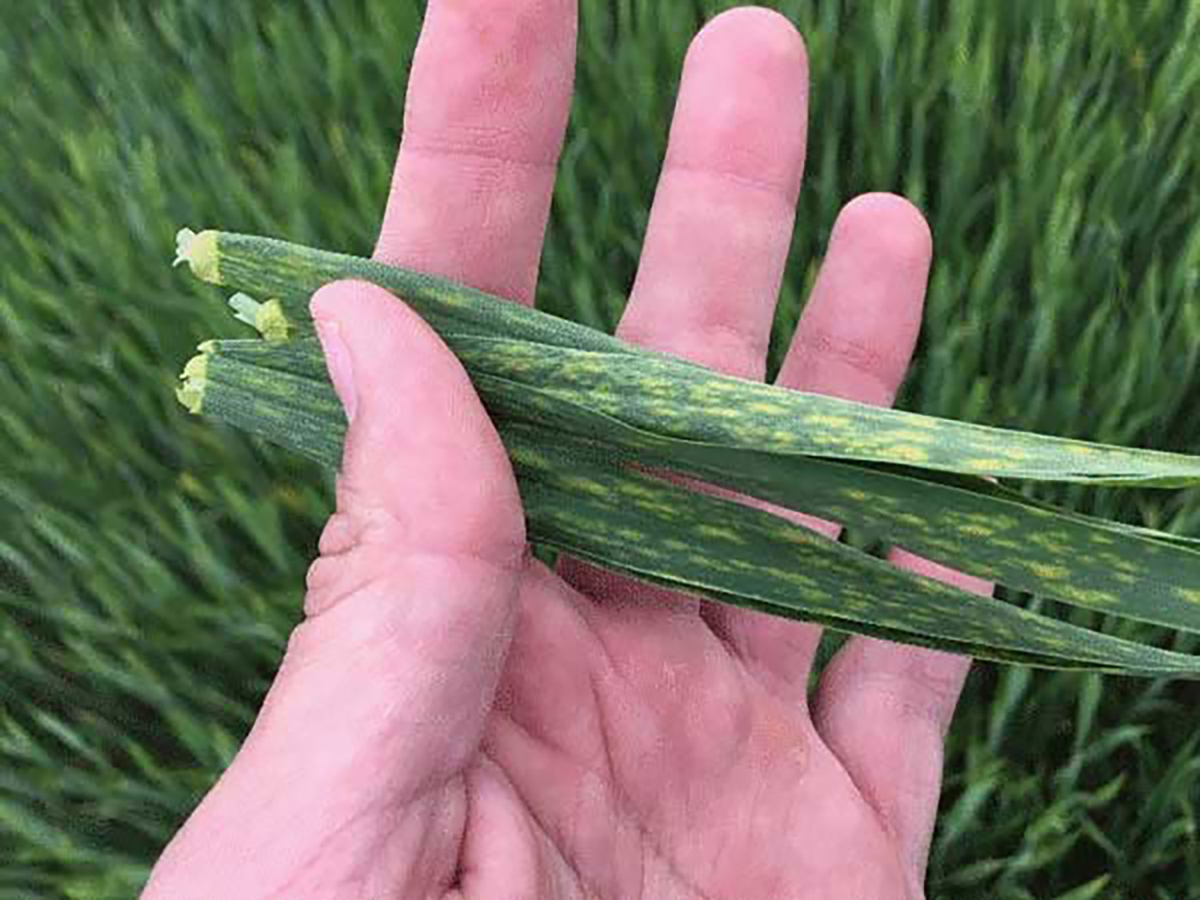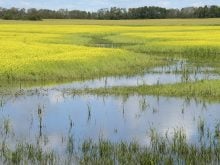Not all physiological leaf spot is created the same.
That is why scouting in these upcoming weeks is critical now that that the crop disease has been confirmed in winter wheat fields in southern Alberta this spring, says Michael Harding, crop health assurance lead for the Alberta government.
Related story: Physiological leaf spot suspected in southern Alberta winter wheat
Read Also

Saskatchewan puts crown land auction on hold
Auctions of Saskatchewan crown lease land are once again on hold.
PLS appears as round or oval lesions that may be yellow or bleached white to grey in colour. Lesions may also have a dark centre with a narrow chlorotic (yellow) halos and tend to be more numerous toward the tip of the leaf blade. Lesions are often found in the upper canopy, but they are rare on lower leaves.
“You need to make sure what you are seeing is leaf spot caused by pathogen versus leaf spot caused by physiological factor,” Reem Aboukhaddour, a researcher and cereal pathologist at Agriculture Canada said in an email response to the Western Producer about the confirmed sightings.
Checking chloride levels in plants and soil is critical.
Soil with inadequate chloride levels, or where chloride is unavailable to the plant, is sometimes more severely affected by PLS. Supplementing deficient areas with chloride fertilizers can help avoid or prevent the disease, but may not provide a yield benefit.
Chloride levels in soil of greater than 30 pounds per acre in the top 24 inches are generally sufficient.
In these cases, the upper canopy looks like it has tons of leaf spot, but the lower canopy is healthy and it is likely physiological.
However, if it is a fungal infection, then that can progress and spread, and action is needed.
Aboukhaddour said an easy way to tell if infection is physiological rather than a pathogen is to see if the infection started at the lower canopy and then developed to the upper canopy.
If the symptoms are stronger on lower leaves and starting to advance on upper leaves, then that may be caused by a fungus. If symptoms are uniform but there’s not much difference in intensity, and if the pattern is more homogenized on the leaf itself, then it is likely physiological.
Aboukhaddour recommends cutting some leaves, leaving them to dry at room temperature and then putting them in a paper envelope to send to a near-by diagnostic lab that can examine them.
Depending on the diagnosis, some coefficient of variation (CV) may be recommended because the crop may also have genetic resistance . If it is infection by fungus, three years rotation away from cereals is recommended to reduce pathogen pressure.
Along with PLS, Harding has also confirmed wheat streak mosaic virus and bacterial leaf streak in multiple fields in southern Alberta this year.
Alerts can be found on the Prairie Crop Disease Monitoring Network.















